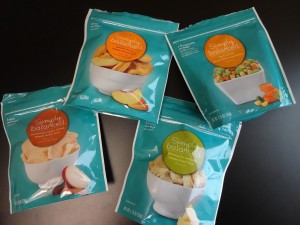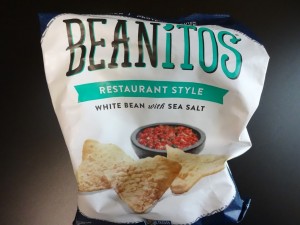This is a post that I did to celebrate Speech Snack’s 2 year blogging anniversary!
About 10% of my caseload is feeding clients. I don’t blog a lot about feeding therapy techniques because I think that these kids really need services from a feeding team and trained professionals.
Suzanne Evans Morris is a FANTASTIC resource for feeding information papers and ideas. I was lucky enough to go to one of her courses on transitioning children from G-tubes when I was in grad school. One of my favorite papers of hers is on different food progressions for biting and chewing.
One of the techniques that I do use is grading my food choices based on how “easy” it is for my kiddoes to manage from an oral motor standpoint. With my feeding clients, I tend to use single textured foods until we are closer to discharge. For instance, I can alter the food’s taste, consistency or size/shape in order to make the food more manageable for my clients.
One of my favorite consistencies to use in therapy is called a “meltable hard solid” This is a term used by Dr. Kay Toomey from the SOS Approach to Feeding. A meltable hard solid is a dry food that becomes moist and is able to be swallowed with minimal effort. Puffed corn is an example of a food that is easily managed and almost melts in your mouth.
Once they are able to manage that, I try to find foods that you can put in your mouth and chew 1-2 times but also maintain their shape-so that they don’t get scattered all around the mouth (requiring more tongue movements. Instead they stay on the molars and kind of mush together when you are chewing them. Mush is probably not the most technical word I could have used.
One challenge in working with these patients is finding foods that are easy to manage and healthy for children to eat. Cheri Fraker, OTR uses a Food Chaining Approach which links foods currently in a child’s repertoire to more advanced foods.
I will generally try to get my clients to accept more liquids and smoothies as this is a great way to get in some vegetables and protein while discussing small changes in food/taste. Does the shake taste different if we add in one spinach leaf? What if I could get them drinking Kale shakes? The bright green color throws them off though. I’ve got to think of some cool names for them: Hulk Juice, Green Lantern Shake, Tree Shakes….
Another food that I try to build up with my clients is popsicles. The cold can be good for triggering swallowing-and it’s another way to add some vegetables in. In general I work towards having kids accept that the vegetable is in the smoothie/popsicle vs. trying to hide it from them. It’s a trust issue.
The Zoku Pop Makers are awesome for using in feeding or traditional language therapy. They freeze a popsicle in about 5 minutes. I tried Blueberry Kale (I’m on a Kale kick, obviously….) this week at home. For feeding kids, I work on accepting different fruits as well as temperatures and how to lick foods. For my language kids, I work on adjectives like cold, verbs like lick, bite, freeze, pour, stir, get and put. I can take pictures of the activity and work on sequencing.
Freeze Dried Fruits are a great way to introduce fruits and vegetables to kids as they are dry and more similar to a chip. I usually check the consistency before offering to my clients. For instance, the peach freeze dried fruits require one big chew and then kind of melt and stay in one place. The pineapple ones require a lot of chewing. The dried carrots were very difficult to eat and small enough to be a choking hazard.
Once opened, these snacks tend to go stale fairly quickly. I will use these as snacks in speech or language sessions. We might take them and talk about foods that are crunchy, more crunchy or the crunchiest.
BEAN CHIPS:
If I have clients that LOVE to eat chips-I might try these chips because they have about 4 grams of protein per serving. The brown bean chips require more chewing but the white bean chips hold their shape in your mouth and only require a few chews before they are ready for swallowing.





